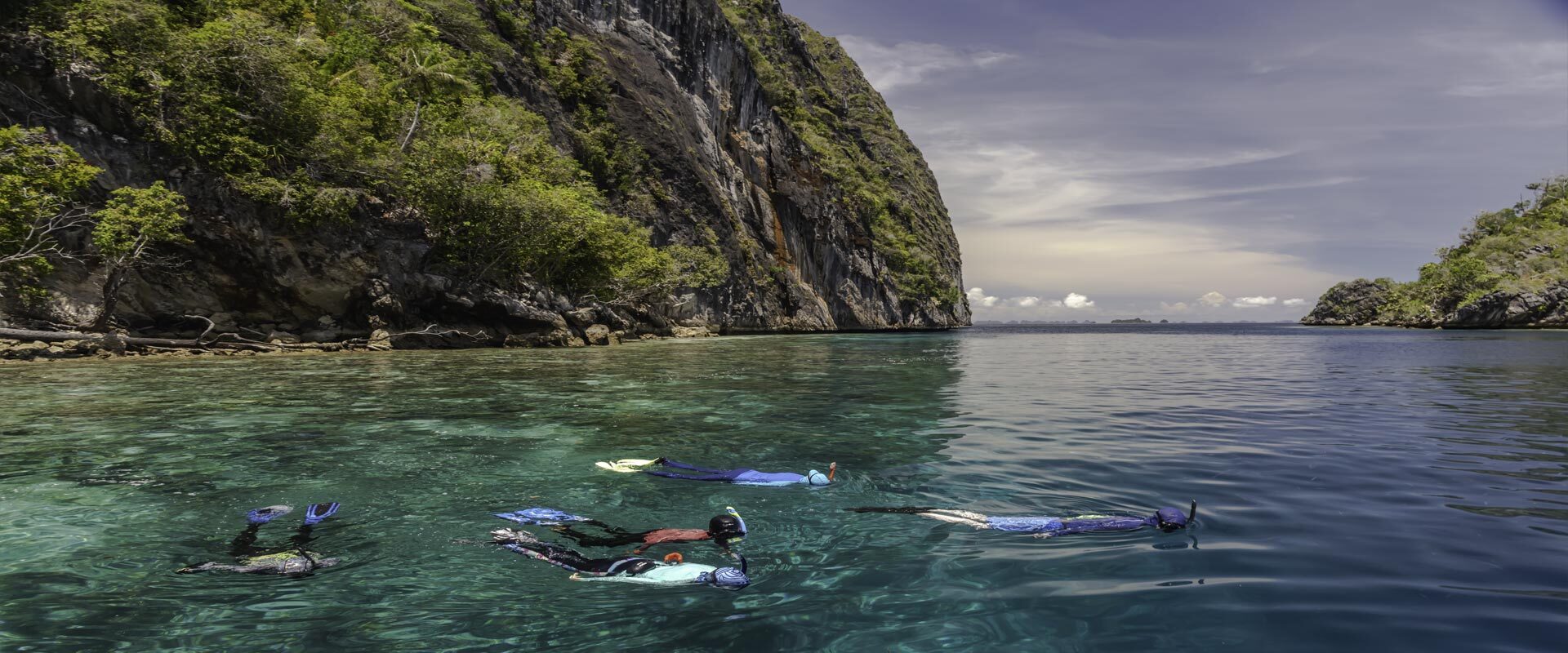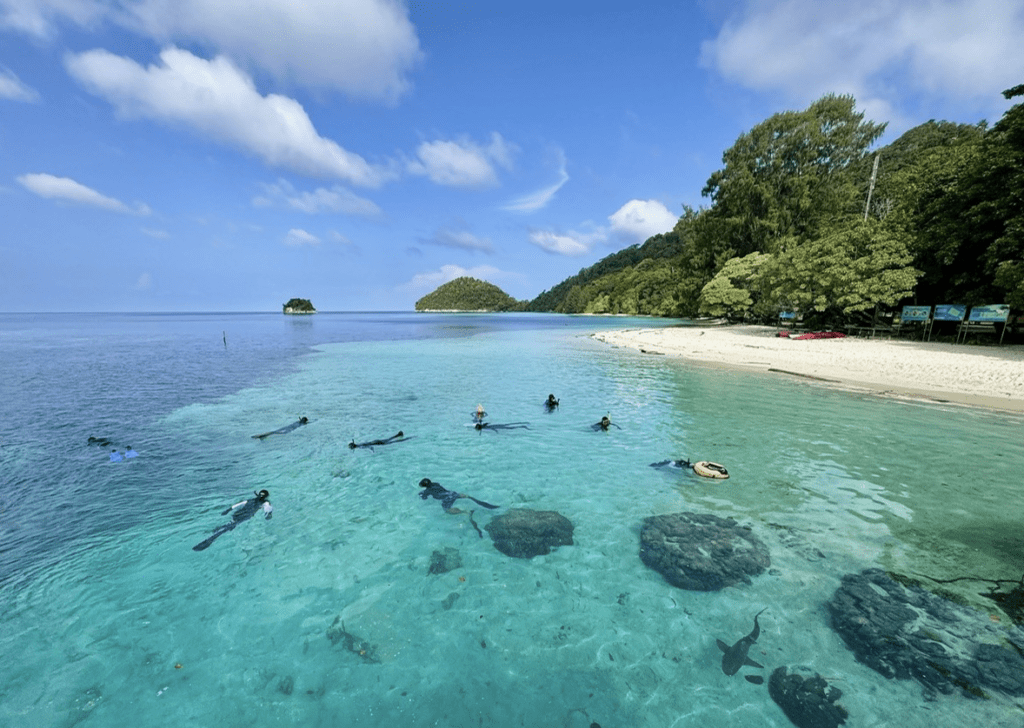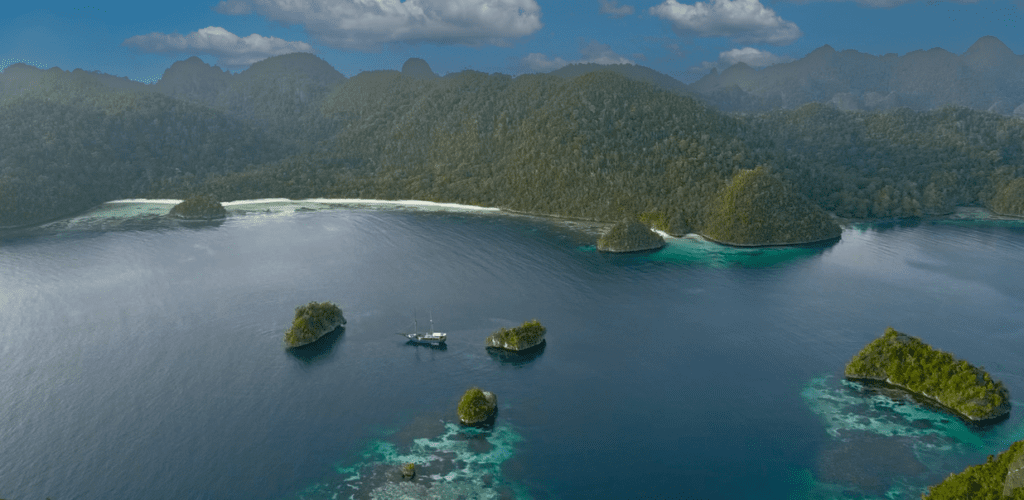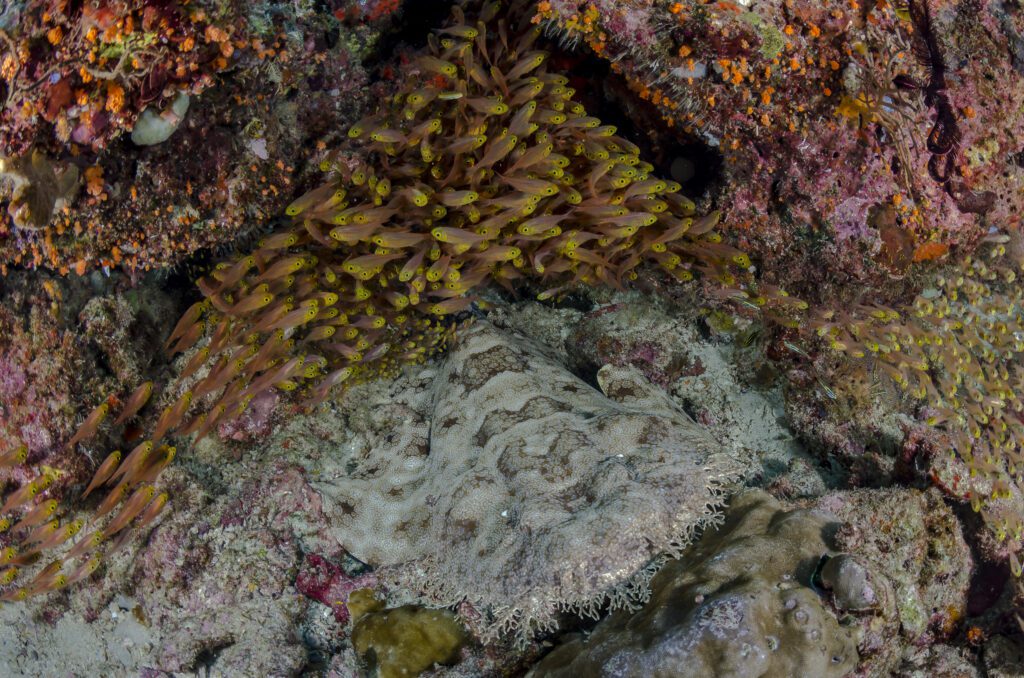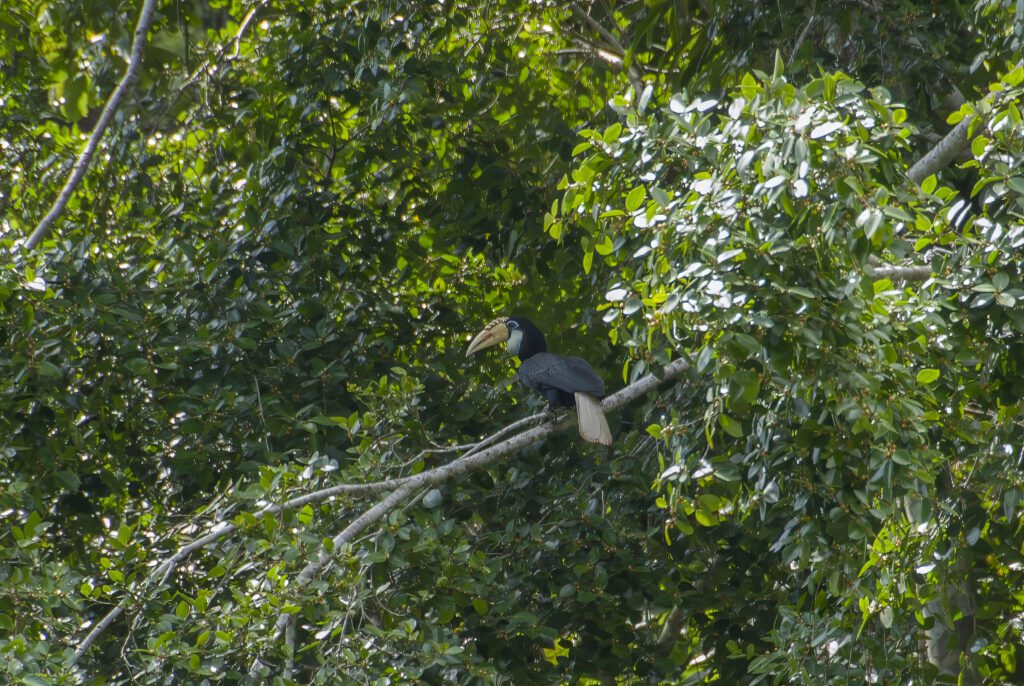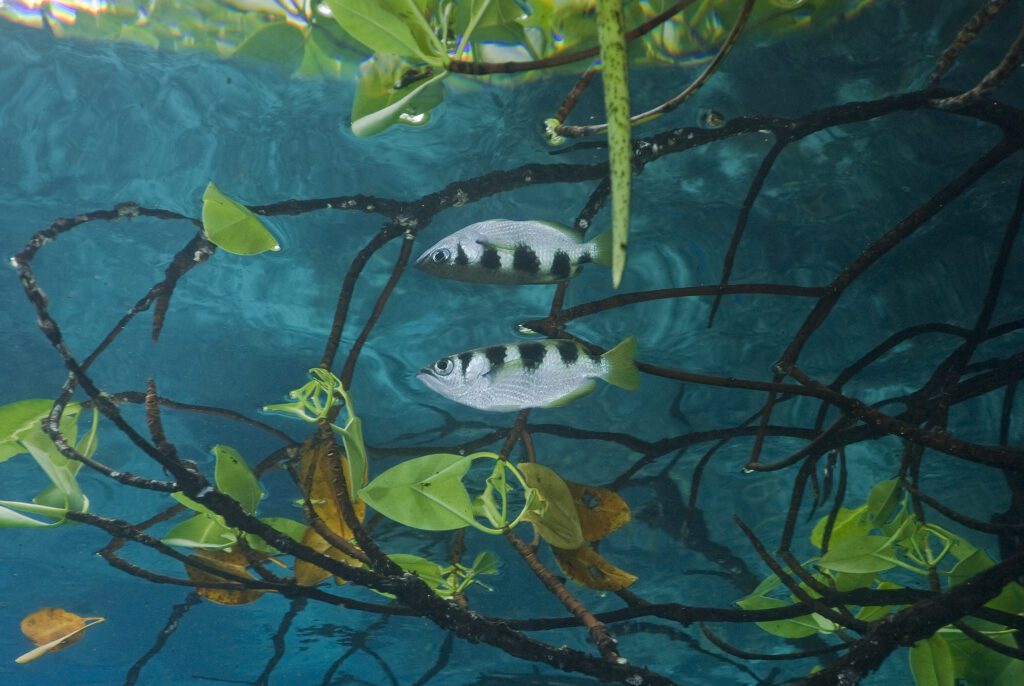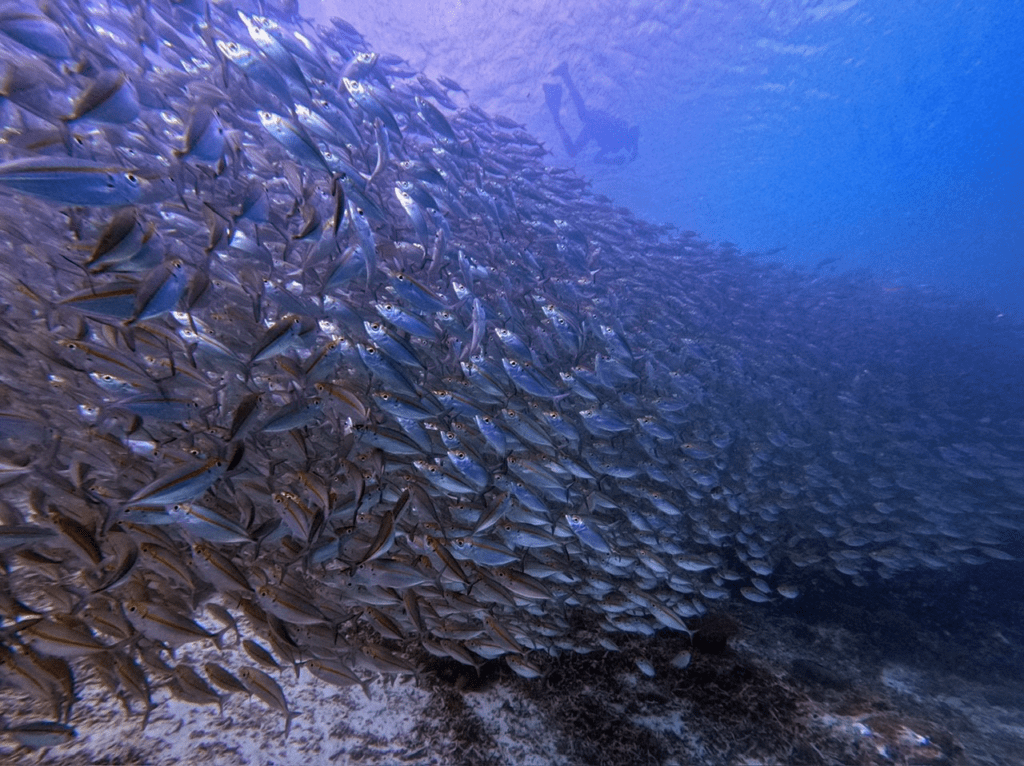Snorkeling the Coral Triangle in Raja Ampat by Danita Delimont Herbig
In 1982 my husband Dave and I had the unique opportunity to visit many of the outlying islands off the eastern coast of Papua New Guinea. For three weeks we snorkeled and dived the beautiful untamed underwater wilderness of those amazing coral reefs. Ever since, we’ve traveled the world, always looking for great snorkeling and diving wherever possible, usually disappointed and unimpressed.
Since we weren’t getting any younger, we decided to seek out the highly regarded Raja Ampat area located in West Papua, Indonesia while we could still get in and out of a boat! The area is one of the richest in all the Coral Triangle and is home to a huge diversity of marine life, partly due to multiple currents flowing through the region. Coupled with Raja Ampat’s very low-scale development, the multitudes of islands and currents make for a sea-rich environment that thrives in all its biodiversity!
With a little research, we signed up with the well-regarded Wilderness Travel. Although their trip was billed as a snorkeling expedition through Raja Ampat, it offered diving to a few of us, if we chartered the entire 100-foot Shakti liveaboard, which we did with 11 of us total. Their crew of 9, including several divemasters and underwater guides, took fabulous care of us throughout the trip on every level imaginable!
We boarded the Shakti in the small port town of Sorong. After our first day of snorkeling, we felt like we had truly returned to what we had experienced so many years before! Thousands of beautiful tropical fish were everywhere, and the coral reefs went on and on for miles. Gorgeous butterflyfish, bannerfish, triggerfish, wrasses, squirrelfish, boxfish, pufferfish and porcupinefish, as well as trumpetfish and even pygmy seahorses intermingled with lovely little damsel fish, and anemones filled with colorful red and white (Nemos) clown fish. One count in a 24-hour period came up with 815 different marine species, about half of Raja Ampat’s official fish species count.
* View video of schooling damselfish and fusiliers at the divesite Melissa’s Garden
Every day we were in the water for a couple of two-hour snorkels. At first, I thought, “how could anyone snorkel for so long?” But I was never bored, always amazed by how you could just float through the coral reefs at your own pace, often carried gently by soft currents. The “pick-up boat” followed our group throughout the snorkel, always ready to come over and pick anyone up when they were ready to take a break– just raise your hand and they were there! One of our guides, always had a floating, innertube-like device that he took along so anyone could hang on, rest, or adjust your mask, ask questions, etc. Both underwater guides had little “etch-a-sketch” type underwater notebooks and were often writing out the name of the species that they were pointing out along the way. They also had eagle eyes, spotting so many little creatures like nudibranchs, mantis shrimp that we weren’t so quick to identify ourselves, and even the odd-looking wobbegong shark, hiding beneath the sea of fishes just waiting for his lunch!
* View video of Wobbegong shark “hiding” under a school of cardinalfish
Raja Ampat’s massive corals and sponges are unforgettable. More than 600 species of corals have been identified from the region: Plate corals that were 15 feet across, gorgonian fan corals that were six feet wide, leather corals that I’d never seen before, which were giant, lush and so healthy, undulating in the currents around us. There were soft raspberry corals, huge brain corals and staghorn corals that grew like a never-ending forest in some places. These corals were just amazing and awesome in their underwater vastness!
One thing we hadn’t considered, which turned out to be a lovely addition to our experience, were the many birds throughout, including the Wilson’s Bird of Paradise and the beautiful hornbills, often roosting in the trees above our anchorage. Their song enchanted us all, and we often went out for sunset cocktail cruises to enjoy the enchanting beauty and birdsong all around us.
Of course, the itinerary is all subject to weather and sea conditions so the expedition leader and the captain would determine which islands we’d go to each day, which route, etc. Some of the islands we visited were Waigeo, with its many nooks and crannies of coastline and coral reefs, Gam, Uranie, Penemu, Wayag (one of the jewels in the crown of Raja Ampat), and many others, isolated and on their own. It doesn’t seem to matter which islands we explored; underwater wonders were everywhere.
Our group also did some amazing mangrove snorkeling, which opened an interesting new world of different kinds of fish, like the archer fish who spits at bugs hanging on the branches above the waterline, dropping them in to the water for a little feast.
One of the most amazing visions that stays with me are the thousands and thousands of schools of fish—rivers of fish, going this way and that way, different species, different colors, just great bands of amazing colorful scores of fish! There were also many giant schools of fish just moving about in big bait balls of sorts. Every time we got out of the water and back to the boat, our friends couldn’t stop talking about how awesome it was! It was so fun to share the experience with some of our oldest and dearest friends from so many years.
I would encourage anyone who loves snorkeling to find their way to Raja Ampat. Luckily for now, it’s still quite healthy with no coral bleaching, and the number of species defy the eye! I will forever keep the peaceful, calming memories of floating among the fish and corals of this magnificent area in my mind and when asked to “Go to your happy place…” there I will be!
Danita Delimont Herbig
4/2024
*Videos courtesy of Expedition Leader and co-owner of Shakti, Bob Brunskill.





































